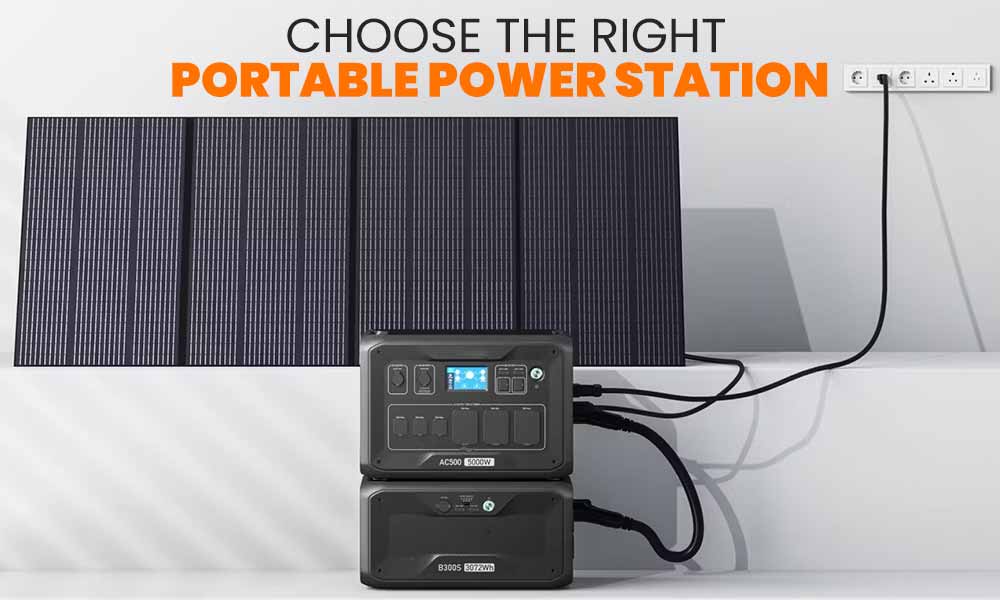How to Choose the Right Portable Power Station for Your Needs

Have you ever found yourself in need of power during an outdoor adventure or in a situation where electricity is unavailable? If so, you’ve probably considered investing in a portable power station. With so many options on the market, it can be overwhelming to find the perfect one for your needs. In this article, we’ll guide you through the process of selecting the right portable power station, including understanding different types, key factors to consider, and how to compare models. Let’s dive in!
Understanding Portable Power Stations
What is a Portable Power Station?
A portable power station is a compact, battery-powered device that provides electricity on the go. It can be used to charge and power various electronic devices, such as smartphones, laptops, cameras, and even small appliances, making it a valuable tool for outdoor enthusiasts, travelers, and emergency preparedness.
Types of Portable Power Stations
There are two main types of portable power stations: solar-powered and non-solar. Solar-powered stations rely on solar panels to charge their batteries, while non-solar options require a connection to a wall outlet or a car’s 12V port for charging. Both types have their pros and cons, so it’s essential to weigh your specific needs and preferences before making a decision.
Popular Brands: Zendure
Zendure is one of the popular brands in the portable power station market. Known for their durability and performance, Zendure offers a range of portable power stations designed to suit various needs. Remember to look for reputable brands like Zendure when shopping for a portable power station, as they often provide reliable, high-quality products.
Key Factors to Consider
Power Output
When choosing a portable power station, the first thing to consider is the power output. It’s measured in watts (W) and determines the types of devices you can charge or power. The higher the output, the more powerful devices you can run. Make sure to select a power station that can handle the wattage requirements of your devices.
Battery Capacity
Battery capacity, measured in watt-hours (Wh), indicates how much energy a power station can store. The higher the capacity, the longer it can power your devices. Consider your intended usage and how long you need the power station to last when selecting a battery capacity that suits your needs.
Portability
Portability is a crucial factor in choosing a portable power station. The size, weight, and design all contribute to its ease of transportation. Look for a power station that’s lightweight and compact, with ergonomic handles or carrying cases to make it easy to carry around.
Charging Options
Different portable power stations offer various charging options. Some common ones include AC outlets, USB ports, DC ports, and even wireless charging. Consider the types of devices you’ll need to charge and make sure the power station you choose has the appropriate ports and connections to accommodate them.
Extra Features
Some portable power stations come with additional features that can enhance your experience. These may include built-in LED lights, LCD screens displaying battery status and usage, and integrated solar panels. While these features may not be necessary for everyone, they can provide added convenience and functionality.
Comparing Models
When comparing different portable power station models, pay close attention to the power output, battery capacity, portability, charging options, and extra features. Make a list of your requirements and compare the specifications of various models to find the one that best meets your needs. Don’t forget to read reviews and ask for recommendations from friends or online communities to get an idea of real-life performance and user satisfaction.
Practical Uses for Portable Power Stations
Portable power stations are versatile tools that can be used in various situations. Some common use cases include:
- Outdoor adventures: Camping, hiking, and other outdoor activities often require access to electricity for charging devices, lighting, and small appliances. A portable power station can help keep your devices powered and your adventure going.
- Emergency preparedness: In the event of a power outage or natural disaster, a portable power station can provide essential power to charge phones, radios, and other critical devices.
- Remote work: If you work remotely or enjoy off-grid living, a portable power station can ensure that you have a reliable source of electricity to power your devices and stay connected.
- Travel: Road trips, RVing, and other forms of travel often require access to electricity for various purposes. A portable power station can help ensure you have power when and where you need it.
Conclusion
Choosing the right portable power station for your needs requires careful consideration of various factors, including power output, battery capacity, portability, charging options, and extra features. By understanding the different types of power stations available and comparing models that meet your requirements, you can find the perfect device to keep your electronics powered and your adventures going. Happy exploring!










